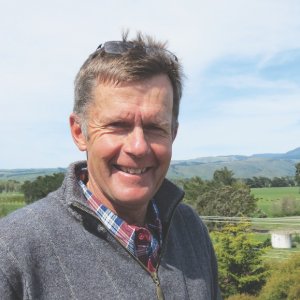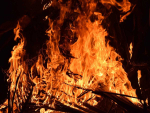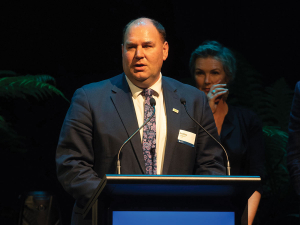Two years ago a similar meeting was held on the property, but Vollebregt says little has changed since then – apart from him planning to run another herd as part of his operation.
He’s been farming in the area for 28 years and now runs only 600 cows in two mobs – one Fresian (290) and the other Jersey (310).
The two herds are necessary due to the configuration of the farm, but he is now working towards having just one breed – a kiwi-cross but will retain the two mobs. He’s building a herringbone shed on the new farm to cater for the third mob. He plans to run between 450 and 470 cows on the new farm, but says it has the potential to run 600.
His original decision to go OAD milking was sparked during a discussion group with Sean Meyers at Rakia Island Dairies where he saw the Turner brothers’ operation where they milked 5000 cows once a day.
“We saw their production per hectare and the way they ran it. My herd manager Cory Wildman was with us. He discussed it and saw that it was possible for us to do this with a lower level of staffing to produce the same with better profitability and sustainability.
“In the last two years we’ve made no great changes. We’ve tried to get on top of mastitis and last year was a good year in that regard. This year we are having quite a few more challenges due to the wet spring.
“We are trying our best to fully feed our cows and so show flexibility in grazing management. The cow numbers are much the same as two years ago although this season there is a slight increase on two years ago.”
The challenge with OAD milking is dealing with the initial loss of production of around 14% which Vollebregt says is probably caused by some unsuitable cows and the cows not being used to it.
In his case it took three years to do, considered a good achievement. He says now he has a good herd of cows used to OAD milking and some slight changes to management practices to select cows better suited to OAD.
Vollebregt is buoyed on by a good season but says he felt there was room for improvement. For example he is looking at his irrigation system which uses K-lines. He believes he can achieve better results if he moves these twice rather once a day.
There is no question of Vollebregt moving back to TAD. “I don’t think about it any more; it’s just what we do. I am happy with the profits, we are retaining our staff and so we are quite happy.”
He says while OAD has many benefits he says most of the issues with OAD are the same as TAD – feeding cows well, improving the quality of cows and looking after the soil and pasture. He says there are still pressure times on an OAD operation and says if there is any spare time, like any farmer, he’ll find something more to do.











